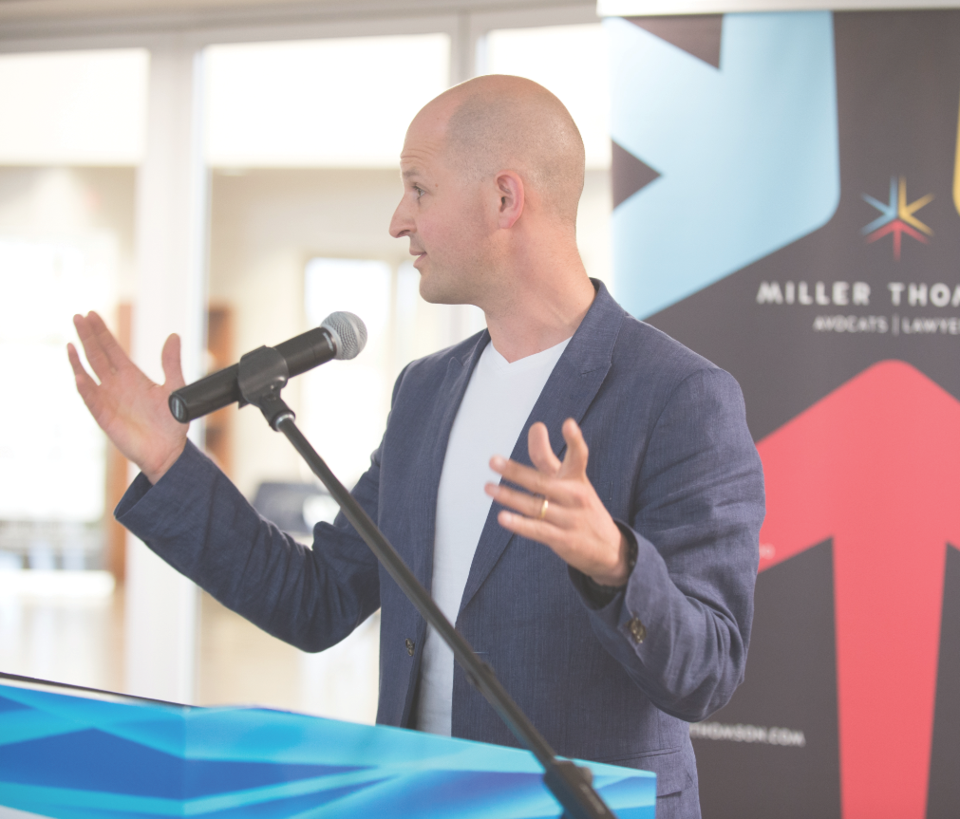Renewable energy has plenty of business opportunities, according to Chad Eggerman, a projects lawyer with Miller Thomson’s Saskatoon office.
He spoke to the Estevan Chamber of Commerce at Southeast College’s Estevan campus on May 16.
Eggerman works on the front end of projects in oil and gas, mining, and real estate. “These days I’ve been rather busy with renewable energy projects,” he said.
Noting there’s probably broad recognition that lowering greenhouse gas emissions is important, as is reducing the carbon intensity of activities, he said this group, the chamber, might be interested in the business opportunities.
To that end, he said the Estevan area, and specifically around North Portal, has one of the greatest solar irradiation levels in all of Canada, which, in turn, generates more power.
He said looking at demand is one of the first things that needs to be done.
“There’s a pretty solid demand for power in southeast Saskatchewan. Not just in boom times, it’s a high growth area.”
Eggerman said it is possible to build your own solar facility. But there’s also potential work in installing solar panels, and building racks. While most solar panels come out of China, racks tend to be built locally.
“There’s opportunity in the solar supply chain,” he said.
That means spec’d welding work. It also means installation.
“There’s a bit of science there,” he said.
Eggerman focused on ground-based projects, as opposed to rooftop facilities. Ground-based projects are more significant, more expensive and generate more power.
There’s demand for designing sites, and for land agents to arrange for sites.
“It’s not just about finding land that’s flat and open. It needs to be close to interconnections, usually into the SaskPower electrical grid,” he said. “You can’t just plug them in and they work.”
Then there’s the need for a contract with SaskPower, who sets the rules and manages that supply of power coming onto the grid. As a vertically integrated utility, it controls everything, and if they change things, that’s a risk. SaskPower has a small power producers program, but that program is being reviewed currently.
One of the huge challenges with renewable energy is its intermittency.
Eggerman noted Saskatchewan is lacking developers. Often solar developers have their head offices in Europe, and they may have offices in Canada.
“We’re not getting into development, here in Saskatchewan. We’re not becoming developers. Maybe that will change in the future. I don’t know,” he said.
Using the example of powering a pumpjack, he added, “There’s no reason you can’t generate and use your own power.”
He noted there are opportunities to use solar with batteries for “off the grid” installations.
“The price of these batteries is dropping all the time,” he said.
Another program is net metering. Using that program, you can “zero out” your bill. Eggerman said he’s shocked it hasn’t been taken up by more people.
More broadly, he noted: “What we’re talking about is ditching SaskPower. That is an astounding thing. SaskPower has its own separate concerns on that.”
Eggerman talked about virtual net metering, where companies produce their own power at one location to offset their power bill at another location, such as a mine or refinery.
While there’s not much ongoing maintenance to these solar plants, there is the necessity of keeping the panels clean on a regular basis, and keeping the roads between them clear.
Big projects can cover as much as a quarter section, he noted. “These are quite complex, technical projects.”
Flare gas
Beyond solar power, Eggerman touched on using flare gas from oil wells and batteries to generate power. He noted that SaskPower had just signed an agreement with the First Nations Power Authority to source 20 megawatts of flare gas generated power.
“This is the beginning of flare gas projects. You’re using that gas to generate electricity. We expect to see a lot of uptake,” he said.
“Over to you, private industry,” Eggerman concluded.



